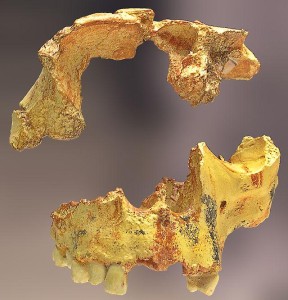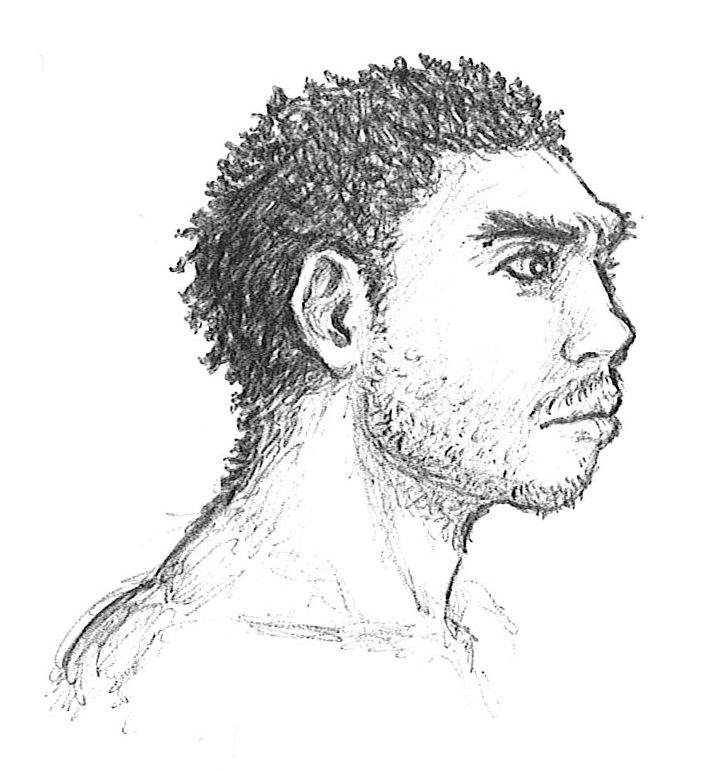31. Homo antecessor
Homo antecessor (1.2 mya)
(“same” / “predecessor” or “pioneer”)

SITES
Gran Dolina and Sima del Elefante, Spain
PEOPLE
Eudald Carbonell, Juan Luis Arsuaga, and J. M. Bermúdez de Castro
INTRODUCTION
Until the recent discovery of hominin fossils dating to over 1.2 mya in the Atapuerca Mountains of Spain, the earliest known fossil material from the area was no more than 800 kya. The 800 kya material was assigned the taxonomic designation of Homo antecessor, or “Pioneer Man,” as the first hominins to have ranged into Western Europe.
PHYLOGENY
Since its discovery, researchers have speculated that Homo antecessor was descended from a more derived form of H. ergaster that may have crossed the Mediterranean Sea from North Africa during a period of lowered sea levels. Now that the geological clock has been pushed back 300 kya, it is thought that they may have traveled through the Levant (i.e. the Eastern Mediterranean region). What is not known is whether the evolutionary event took place in Europe or North Africa. As far as descendant species, Homo antecessor is one contender for the ancestor of Homo heidelbergensis that in turn is thought to have given rise to neandertals and modern humans.

DISCOVERY AND GEOGRAPHIC RANGE
The species was discovered by Eudald Carbonell, Juan Luis Arsuaga, and J. M. Bermúdez de Castro. The first site to yield fossil material was the Gran Dolina site (see Figure 31.4) in the Atapuerca mountain range in Spain. Dated to 900 kya, the site has yielded both H. antecessor and H. heidelbergensis material. Eighty fossils from six individuals were recovered. It is of interest that much of the fossil material is immature and exhibits cut marks that may indicate that they were victims of cannibalism.

The earliest H. antecessor site is Sima del Elefante (“Pit of the Elephant”). Dated to 1.2 mya, only a handful of fossils have been recovered from the site.
In addition to other sites in Spain, tools and footprints have been found in Happisburgh, England and Ceprano, Italy (also known as Homo cepranensis, some consider it more closely related to H. heidelbergensis).

PHYSICAL CHARACTERISTICS
The 800 kya H. antecessor material was more derived than earlier erectus forms, possessing a larger brain (1,000–1,150 cc) and a more modern skull and face. They had low foreheads and possessed an occipital bun (a bun or chignon is the hairstyle wherein one winds long hair into a doughnut shape on the top or back of the head), as did neandertals (see neandertal features in Figure 31.5). It has been suggested that the purpose of that posterior protrusion is to balance the weight of the anterior portion of the skull and face. Based upon cranial anatomy, they are thought to have been capable of detecting the same range of sounds as modern humans and were possibly right-handed. They were almost as tall as modern humans at 5.5–6′ (1.6–1.8 m), with males weighing ~200 lb (90 kg).

Review of Derived Characteristics
- Increased encephalization.
- Occipital bun.
- Tall like Turkana Boy.

